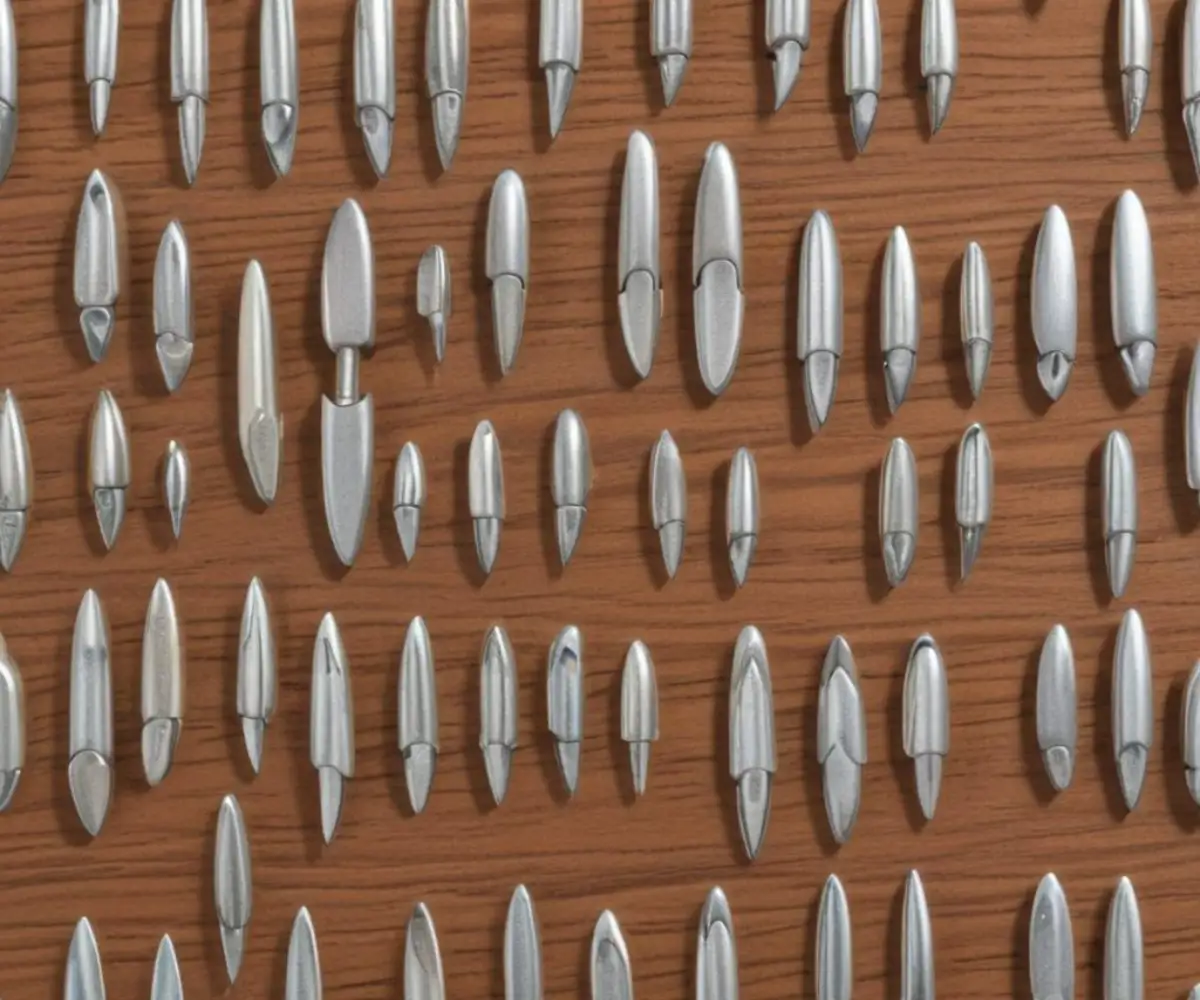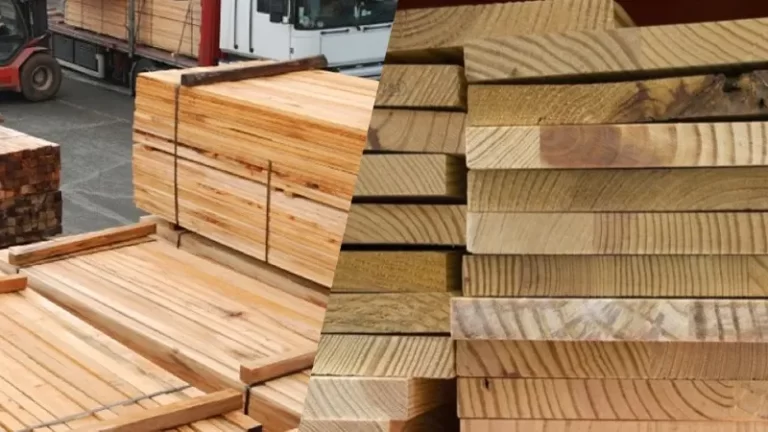How Much Weight Can a Brad Nail ACTUALLY Hold? The Answer Isn’t Simple
You have a project in mind—maybe it’s hanging decorative trim, assembling a small craft, or securing a piece of delicate molding. You reach for your brad nailer, the go-to tool for quick and clean fastening. But then a critical question pops into your head: “Just how much weight can this tiny nail possibly hold?”
It’s a common problem for DIY enthusiasts and woodworkers alike. You need a secure hold, but you don’t want to split the wood or leave a massive hole that requires extensive filling. The internet offers vague answers, often stating that brad nails aren’t meant for load-bearing applications, which, while true, isn’t very helpful for the task at hand. You’re left wondering if your carefully placed trim will come crashing down.
You'll Learn About
The Truth About Brad Nail Strength: It’s Not About a Single Number
The challenge with determining the exact weight a brad nail can hold is that there’s no magic number. A brad nail’s holding power is not a fixed value but is influenced by a complex interplay of various factors. Understanding these factors is the key to using brad nails effectively and safely.
Brad nails, typically made from 18-gauge wire, are prized for their slim profile, which minimizes wood splitting and leaves a small, easily concealable hole. This makes them perfect for delicate trim work where a larger finish nail would be overkill. However, this same slender design is what limits their raw strength compared to their thicker cousins, like 16-gauge finish nails.
Deconstructing Holding Power: Shear vs. Withdrawal Strength
To truly grasp a brad nail’s capabilities, you need to understand the two primary forces it contends with: shear strength and withdrawal (or pull-out) strength. Imagine hanging a small picture frame with a single brad nail.
Shear strength is the force that acts perpendicular to the nail’s shank. It’s the downward pull of the picture frame’s weight trying to “shear” the nail in half. Nails are generally quite strong in shear.
Withdrawal strength is the force required to pull the nail straight out of the wood. This is where brad nails are weakest, due to their smooth shanks and very small heads. Friction is the primary force keeping them in place.
Key Factors That Determine a Brad Nail’s Holding Capacity
Several variables come into play when you fire a brad nail, and each one can significantly alter its ability to hold weight. Mastering these will allow you to approach your projects with confidence.
1. Nail Length and Penetration Depth
This is arguably the most critical factor. A longer nail that penetrates deeper into the substrate will always have more holding power. A common rule of thumb for general woodworking is to use a nail that is about three times the thickness of the material you are fastening. When attaching trim to a wall, you need a nail long enough to go through the trim, the drywall, and then deep into the wooden stud behind it.
For a secure hold into a wall stud, aim for at least ¾-inch to 1-inch of penetration into the solid wood. Anything less, and you’re relying on the much weaker grip of the drywall, which is not recommended for anything other than the lightest of items.
2. Wood Type and Density
The type of wood you’re nailing into makes a huge difference. Hardwoods like oak or maple will grip a nail much more tightly than softwoods like pine or cedar. The dense fibers of hardwood create more friction against the nail shank, significantly increasing its withdrawal resistance. Conversely, in softwoods, nails can pull out more easily.
Always consider the material you are working with. If you’re fastening into a soft material, using a slightly longer nail or adding a dab of wood glue can provide the extra security you need.

3. The Critical Role of Wood Glue
In fine woodworking and trim carpentry, brad nails are often not the primary fastener. Their main job is to act as a clamp, holding the pieces together while wood glue dries. Once the glue has cured, it forms a bond that is often stronger than the wood fibers themselves. In these applications, the brad nail provides the initial hold, but the glue provides the long-term structural strength.
For any project where strength is a concern, such as assembling small cabinets or attaching heavier trim, always use a quality wood glue in conjunction with your brad nails. This combination creates an incredibly strong and durable joint.
4. Nail Orientation and Angle
Driving nails straight in (perpendicular to the surface) is standard practice. However, driving nails at a slight angle, a technique known as toenailing, can sometimes increase withdrawal resistance. This is because the angled nail has to fight against the wood grain in multiple directions to pull out.
Be cautious when toenailing with brad nails, as their thin gauge makes them susceptible to bending or “springing out” the side of the wood if the angle is too steep. A slight angle of 15-20 degrees is usually sufficient.
Brad Nail Holding Power: Weight & Best Use
Brad nails (typically 18-gauge) are considered to have very little inherent holding strength and are generally intended for lightweight applications where the parts are also secured with glue (the brad holds the pieces in position while the glue dries).
Here is a breakdown of the typical holding power and application:
Typical Holding Power (Shear Load)
When driven into wood (the intended primary use), a single brad nail’s holding strength is difficult to quantify with a precise number, but it is very low:
- In Wood: When fastened perpendicular to the nail’s shank (shear load), which is how they are meant to be used (e.g., attaching trim to a stud), a single 18-gauge brad can typically hold a few pounds of lightweight trim or molding. For anything with actual load, the strength comes from the glue.
- In Drywall: Brad nails should not be used to hang items in drywall without hitting a stud. In drywall alone, a nail’s holding power is often considered to be near zero for anything beyond the lightest decorative item, as the drywall material is prone to tearing out.
Factors That Affect Holding Power
- Gauge (Thickness): Brads are thin (18-gauge, or about in diameter, and sometimes even thinner 21- or 23-gauge pins), which means they have less metal to resist shear force compared to thicker finishing nails (16 or 15-gauge) or framing nails (10d, 16d). Thicker nails have more holding power.
- Head Size: Brad nails have a very small head. This is great for an invisible finish, but it means they are poor at resisting withdrawal (pulling out) and do not clamp the material very strongly.
- Use with Glue: For their intended purpose (cabinets, molding, trim), brad nails function primarily as a temporary clamp until the wood glue sets. The long-term strength of the joint comes from the glue, not the nail.
- Penetration Depth: The nail must penetrate the second, main piece of material (e.g., the stud) by a depth that is at least 3 times the thickness of the material being fastened to ensure a secure hold.
Practical Applications and Weight Holding Estimates
While an exact pound-for-pound rating is elusive, we can establish some practical guidelines for common uses. The following table provides a general estimate of what you can expect from an 18-gauge brad nail under ideal conditions (i.e., proper penetration into solid wood).
| Application | Estimated Shear Strength (per nail) | Key Considerations |
|---|---|---|
| Light Picture Frame (under 5 lbs) | 5-10 lbs | Ensure at least 3/4″ penetration into a wall stud. Do not rely on drywall alone. |
| Small Decorative Shelf (display only) | 2-5 lbs | Use multiple nails and wood glue. Not for functional storage. |
| Baseboard/Shoe Molding | N/A (Holding Force) | Primary function is to hold trim tight against the wall; not supporting direct weight. |
| Crown Molding | N/A (Holding Force) | Used with adhesive caulk/glue to hold molding in place while the adhesive cures. |
| Wainscoting Panels | N/A (Holding Force) | Often combined with construction adhesive. For a strong application, learn about installing wainscoting on plaster walls. |
When to Step Up to a Bigger Nail
Brad nails are fantastic tools, but they have their limits. Knowing when to switch to a more robust fastener is crucial for safety and the longevity of your work. If your project involves any of the following, it’s time to put the brad nailer down.
Consider a 16-gauge or 15-gauge finish nail if:
- You are attaching thick or heavy trim like large baseboards or substantial crown molding.
- The material you are fastening is over ¾-inch thick.
- The project needs significant structural holding power, such as building load-bearing shelves or assembling large furniture carcasses.
A thicker gauge nail provides substantially more holding power. To understand the difference in strength, it’s worth exploring how much weight a 16-gauge nail can hold. A subtle difference in gauge can mean a world of difference in strength.
Achieving Maximum Holding Power: Best Practices
To get the most out of your brad nails and ensure a secure, long-lasting result, follow these professional tips.
1. Choose the Right Nail Length
Always follow the “three times the thickness” rule as a starting point. Measure the thickness of your trim piece, add the thickness of the drywall (typically ½ inch), and then add at least ¾ inch for stud penetration. This will give you the minimum nail length required.
2. Locate Studs Accurately
Don’t guess where your wall studs are. Use a quality electronic stud finder to locate and mark them before you begin nailing. Fastening into solid wood is the only way to achieve reliable holding power for anything more than a few ounces.
3. Set the Correct Nail Depth
Adjust the depth setting on your nailer. You want the nail head to be slightly below the wood surface (countersunk) without driving it too deep. An overdriven nail can shoot straight through thin material, completely losing its holding power. Test your depth on a piece of scrap wood first.
4. Use Glue for Strength
As emphasized before, for any joint that requires durability, pair your brad nails with wood glue or construction adhesive. Apply a thin, even bead of glue to one of the surfaces before nailing them together. This simple step elevates the joint from a temporary hold to a permanent bond.
5. Nail Spacing and Pattern
Don’t rely on a single nail. For trim, place nails every 12 to 16 inches, ensuring you hit a stud each time. For joints, use a strategic pattern of nails to resist twisting and pulling forces. A zigzag or triangular pattern is often more effective than a straight line.
Understanding these principles transforms the brad nail from a simple fastener into a versatile tool in your arsenal. It’s not about finding a single number for its weight capacity, but about mastering the factors that create a strong, reliable connection for all your delicate and detailed projects.

